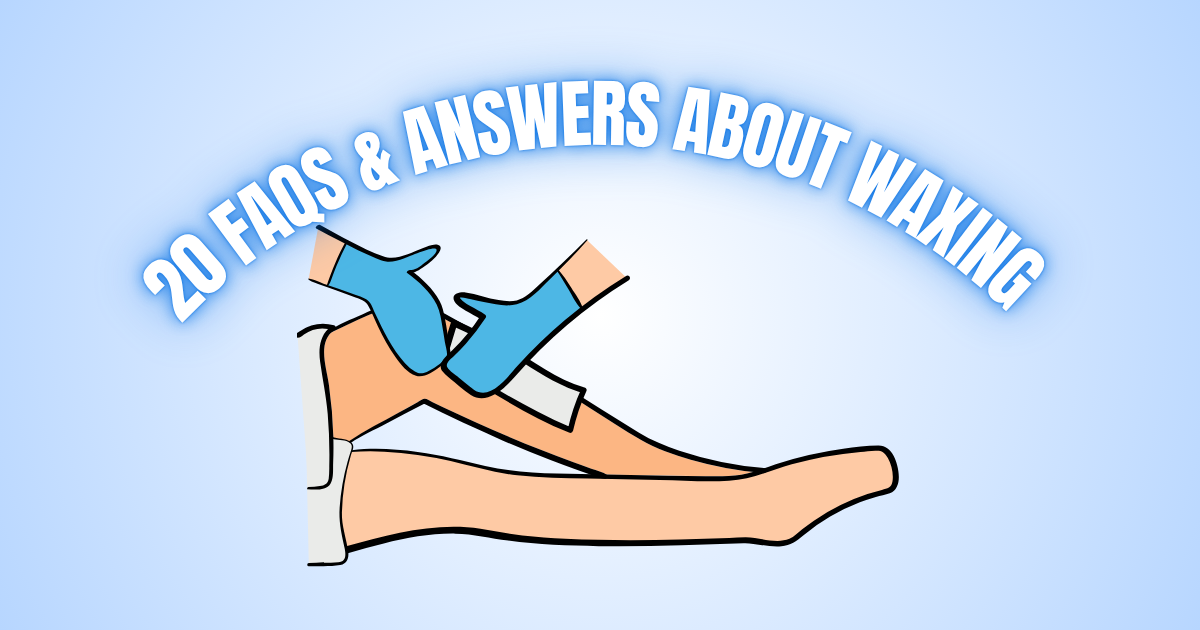Top 20 Frequently Asked Questions About Waxing
Find the answers to the most common questions about waxing so you can be confident and well-prepared for your experience.
What is waxing?
Waxing is a temporary hair removal method that uses wax to pull hair out from the root. The wax is applied to the skin, adheres to the hair, and is then pulled off, taking the entire hair follicle with it. This results in smoother skin for a longer period compared to shaving.
How does waxing compare to shaving?
Waxing removes hair from the root, leaving skin smooth for 3-6 weeks, and the hair that grows back is softer. Shaving only cuts the hair at the surface, so it grows back quickly (1-3 days), feels stubbly, and can cause nicks and dark spots. Waxing provides longer-lasting results.
Is waxing painful?
The sensation of waxing varies from person to person, depending on their pain tolerance and the area being waxed. However, at a professional spa, skilled estheticians and high-quality wax help minimize discomfort, making the experience more pleasant.
How long does it take for hair to grow back after waxing?
Typically, hair starts to grow back in about 3 to 6 weeks. The advantage of waxing is that the new hair is usually finer, thinner, and softer than when you shave, helping your skin stay smooth for longer.
Does waxing make hair grow back thicker or more abundant?
Absolutely not. This is a common misconception. Because waxing removes hair from the root, the new hair grows back finer, softer, and lighter. Regular waxing can also weaken the hair follicles over time, leading to reduced hair growth.
Does waxing cause dark spots or brighten the skin?
Proper waxing technique does not cause dark spots. On the contrary, it also acts as a light exfoliant, helping the skin’s surface look brighter and smoother. Dark spots usually occur due to incorrect technique, low-quality products, or improper aftercare.
How often should I get waxed?
The ideal frequency for waxing is every 4 to 6 weeks. This schedule ensures the hair is the proper length and aligns with its natural growth cycle, making subsequent sessions easier and more effective.
Does my hair need to be long to get waxed? How many mm is enough?
Yes. Hair needs to be a minimum length for the wax to grip it effectively and pull it from the root. The ideal length is about 5-6mm (roughly the size of a grain of rice). If the hair is too short, the wax won’t adhere; if it’s too long, it can make the process more painful. Generally, you should let your hair grow for about 2-3 weeks after shaving or trimming.
What should I do to prepare for a waxing session?
- Wear loose, comfortable clothing.
- If your skin is sensitive or dry, moisturize the area to be waxed 2-3 days beforehand.
How should I care for my skin after waxing?
- Avoid hot showers, saunas, and swimming for 24-48 hours.
- Wear loose-fitting clothes to prevent friction.
- Use soothing, alcohol-free moisturizers.
- Use a specialized post-waxing lotion daily to prevent ingrown hairs and nourish the skin.
How long after waxing can I shower, swim, or go to the gym?
You should wait at least 24-48 hours. After waxing, your hair follicles are open and your skin is very sensitive. Hot showers, swimming (in chlorinated water), saunas, or working out (which causes sweating) can lead to irritation, rashes, or even folliculitis.
Can waxing cause folliculitis (inflamed hair follicles) and how can I prevent it?
Waxing can cause folliculitis if the procedure is not hygienic or if aftercare is improper. To prevent this, choose a reputable spa that guarantees hygiene and follow aftercare instructions, such as keeping the skin clean and dry.
Is waxing suitable for sensitive skin?
People with sensitive skin can still get waxed, but it’s important to choose a reputable salon that uses high-quality wax formulated for sensitive skin. Inform your esthetician about your skin condition for proper advice and care.
Should I get waxed during my period?
It’s best to avoid waxing right before or during your menstrual period. At this time, your body retains more water and your skin becomes more sensitive, which can make waxing more painful than usual. The best time to wax is about a week after your period ends.
Is waxing safe during pregnancy?
Waxing is generally safe for pregnant women, provided their health is stable. However, skin is often more sensitive during pregnancy. Be sure to inform your esthetician about your pregnancy so they can use gentle products and be extra careful.
Do medications affect waxing?
Yes. Some medications, especially acne treatments containing Retin-A or Accutane (Isotretinoin), can make the skin thinner and more sensitive. You must stop using these medications for at least 3-6 months before waxing to avoid the risk of skin damage. Consult your doctor and inform your esthetician.
Should I wax myself at home?
You can wax at home, but you need to be careful. Incorrect technique can cause pain, burns, hair breakage, or folliculitis. For sensitive areas like the bikini line, underarms, or face, it’s best to visit a professional to ensure safety and effectiveness.
Why should I choose professional waxing at a spa?
- Safety and hygiene: Tools are sterilized, and the process is clean.
- High effectiveness: Skilled estheticians remove hair from the root, reducing ingrown hairs.
- Less pain: Proper technique and quality products minimize discomfort.
- Saves time and effort.
What does a professional waxing process look like?
- Cleanse the skin: The area is cleaned with a special pre-wax solution.
- Apply the wax: Wax is applied in the direction of hair growth and removed swiftly in the opposite direction.
- Remove residue: A post-wax oil is used to clean off any remaining wax and soothe the skin.
- Moisturize: A lotion is applied to hydrate and protect the skin.
What are the most popular bikini wax styles?
- Bikini Line: Tidies up the hair on the sides of the upper thighs.
- Brazilian: Removes all hair from the pubic region, leaving only a small strip in the front.
- Hollywood: Removes everything, leaving the area completely bare.
Do you have any more questions about waxing that need answers? Contact us for a consultation!


 Tiếng Việt
Tiếng Việt